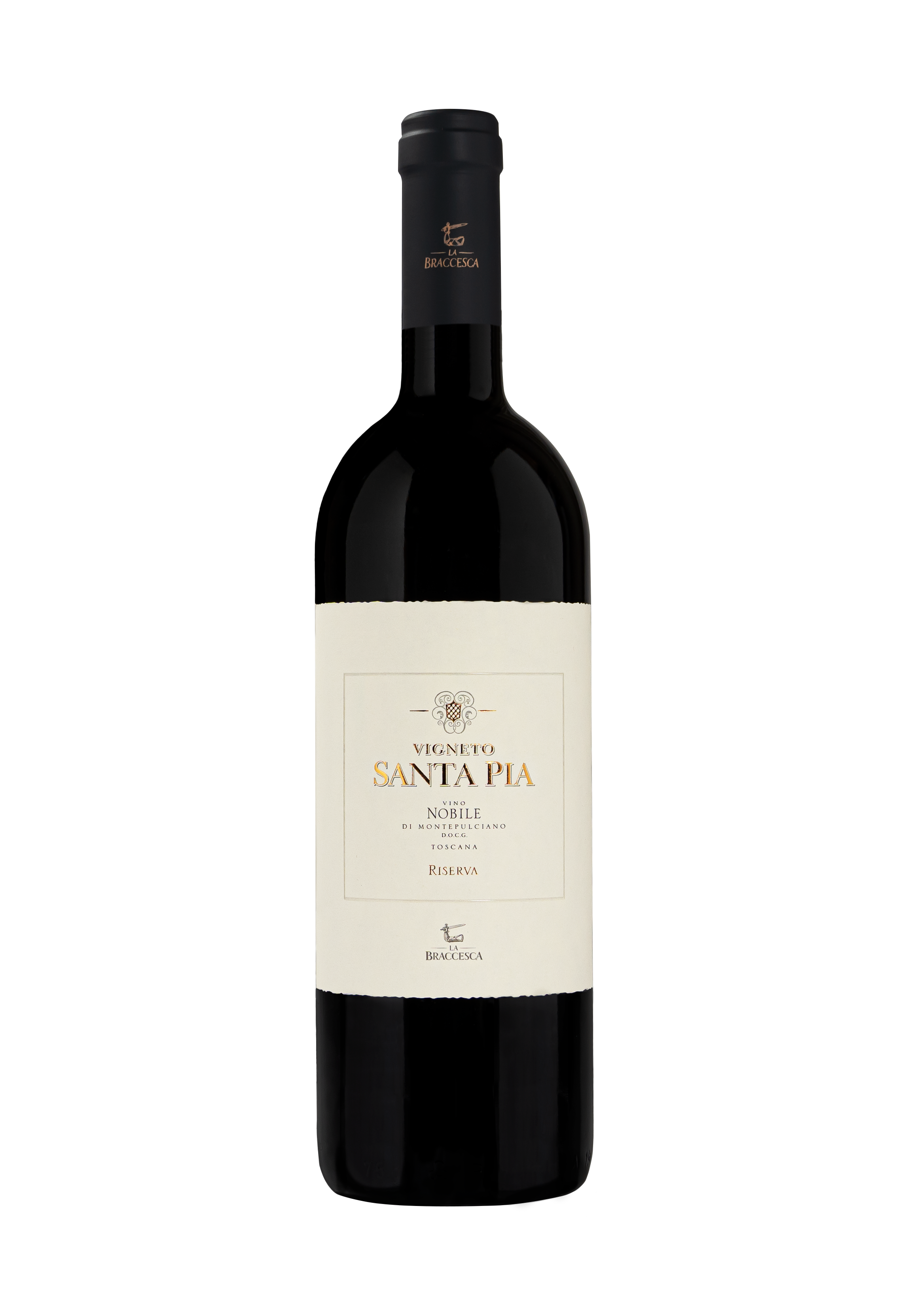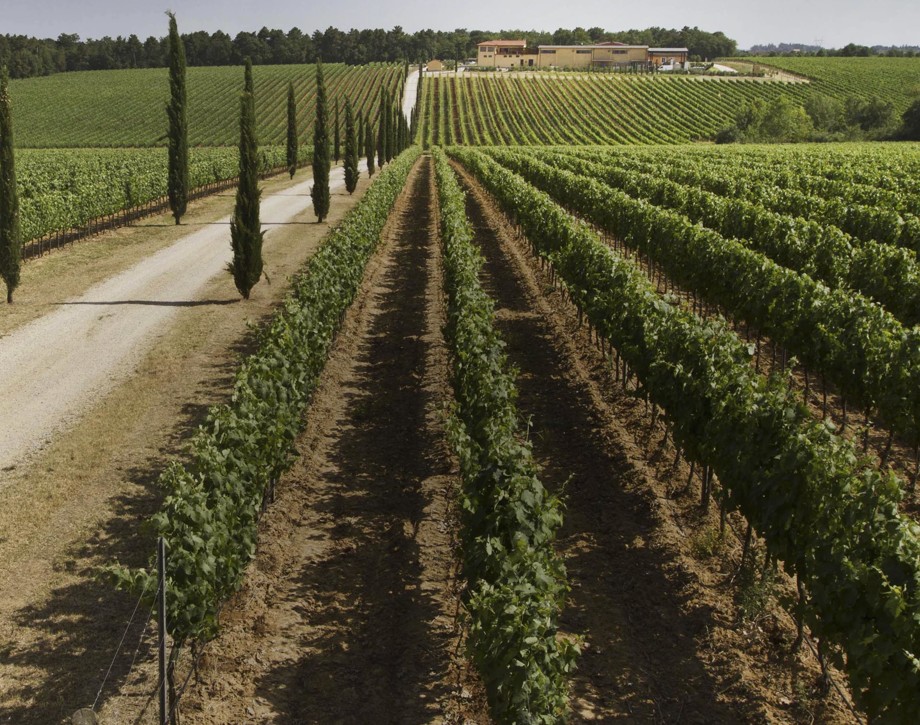Vigneto Santa Pia

Climate
A mild and rainy winter in 2009 led to a normal bud break in early April and, despite cooler temperatures in May, a warm late May created the conditions for a normal flowering and fruit set. After significant rainfall, the arrival of summer heat in July and August, along with ample ground water reserves, accelerated the growth and development of the vines. Dry end of season weather led gradually to a complete ripening, though with some irregularity, and at the harvested grapes were fully mature both in terms of sugars and of the sweetness of their aromas and the suppleness of their tannins. The wine is quite balanced in its fruit and fragrance, though not particularly full-bodied.
Vinification
The grapes for the 2009 Santa Pia were harvested in early October, when properly ripe, with a selection of only the healthiest and most mature bunches. After destemming and a soft pressing, the grapes fermented for 20 days and the wine then aged for approximately 16 months in 80 and 130 liter oak barrels, where it went through a complete malolactic fermentation. A period of aging in stainless steel and tanks and then in bottle lasted a further 20 months before commercial release.
Historical Data
The La Braccesca estate covers some 1255 acres (508 hectares) where once were located the holdings of the Bracci counts, who gave their name both to the property and its count of arms: an armor-clad arm holding a sword. The overall vineyard surface consists of 850 acres (340 hectares) and is divided into two blocks: the first, 575 acres (233 hectares) is situated on the border between Montepulciano and the neighboring township of Cortona. The second, instead, 255 acres (103 hectares) insize, arrives close to the city itself and includes three highly renowned sub-zones for the production of outstanding red wine: Cervognano, Santa Pia, and Gracciano. Santa Pia is produced from a 37 acre (15 hectare) vineyard situated in the site of the same name, located the terraces below the town of Montepulciano. Its unique soil, medium in texture and consistence, rich in stones and sand, have assisted the ambition to produce an elegant, but at the same time classic, example of Sangiovese, one capable of transmitting the a highly recognizable expression of this historic production zone. The first year of production of Santa Pia was the 2001.
Tasting Notes
A wine of great power and elegance, the 2009 Santa Pia offers a nose with notes of toasted tobacco along with blackberries and wild cherries. On the palate the attack is ripe and enveloping, the flavors firm in structure but with supple tannins. The finish features notes of vanilla and red berry fruit.

The Wine
Santa Pia is produced from a 15-hectare (37 acres) vineyard in an area called Santa Pia, located on the ridges just below the town of Montepulciano. This particular area has sandy loamy soils rich in rocky deposits known as “scheletro” that allow the Antinori’s to create an elegant yet traditional expression of the Sangiovese grape that reflects the characteristics of this historic winemaking area. The first vintage to be produced was 2001.

Climate
A mild and rainy winter in 2009 led to a normal bud break in early April and, despite cooler temperatures in May, a warm late May created the conditions for a normal flowering and fruit set. After significant rainfall, the arrival of summer heat in July and August, along with ample ground water reserves, accelerated the growth and development of the vines. Dry end of season weather led gradually to a complete ripening, though with some irregularity, and at the harvested grapes were fully mature both in terms of sugars and of the sweetness of their aromas and the suppleness of their tannins. The wine is quite balanced in its fruit and fragrance, though not particularly full-bodied.
Vinification
The grapes for the 2009 Santa Pia were harvested in early October, when properly ripe, with a selection of only the healthiest and most mature bunches. After destemming and a soft pressing, the grapes fermented for 20 days and the wine then aged for approximately 16 months in 80 and 130 liter oak barrels, where it went through a complete malolactic fermentation. A period of aging in stainless steel and tanks and then in bottle lasted a further 20 months before commercial release.
Historical Data
The La Braccesca estate covers some 1255 acres (508 hectares) where once were located the holdings of the Bracci counts, who gave their name both to the property and its count of arms: an armor-clad arm holding a sword. The overall vineyard surface consists of 850 acres (340 hectares) and is divided into two blocks: the first, 575 acres (233 hectares) is situated on the border between Montepulciano and the neighboring township of Cortona. The second, instead, 255 acres (103 hectares) insize, arrives close to the city itself and includes three highly renowned sub-zones for the production of outstanding red wine: Cervognano, Santa Pia, and Gracciano. Santa Pia is produced from a 37 acre (15 hectare) vineyard situated in the site of the same name, located the terraces below the town of Montepulciano. Its unique soil, medium in texture and consistence, rich in stones and sand, have assisted the ambition to produce an elegant, but at the same time classic, example of Sangiovese, one capable of transmitting the a highly recognizable expression of this historic production zone. The first year of production of Santa Pia was the 2001.
Tasting Notes
A wine of great power and elegance, the 2009 Santa Pia offers a nose with notes of toasted tobacco along with blackberries and wild cherries. On the palate the attack is ripe and enveloping, the flavors firm in structure but with supple tannins. The finish features notes of vanilla and red berry fruit.

Tenuta La Braccesca
The estate’s name comes from the historical farm that once stood there, owned by the Count of Bracci, whose coat of arms appears on the estate’s logo; an arm covered with armor brandishing a sword. Marchesi Antinori acquired the estate in 1990. The property extends over an area of 508 hectares (1255 acres) and the vineyards cover an area of 340 hectares (840 acres) divided into two blocks: the first is 366 hectares (904 acres) of which 237 (585 acres) are planted with vineyards and is located on the border between the cities of Montepulciano and Cortona. The other block is 142 hectares (350 acres) of which 103 (254 acres) are planted with vineyards, it extends all the way to Montepulciano encompassing three of the most famous parcels of land known for the production of great red wines: Cervognano, Santa Pia and Gracciano.

Soil
Sandy loam rich in very fine gravel.
















